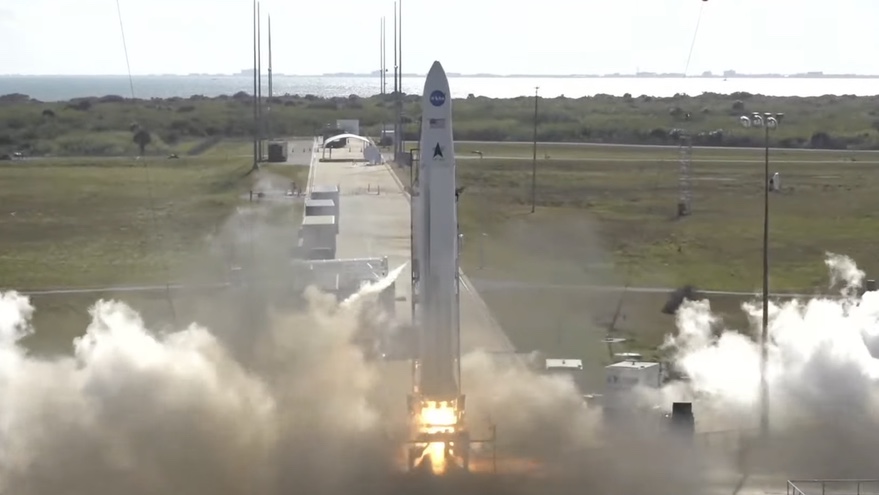
Astra blames launch failure on wiring error and software flaw (Image Credit: Space News)
WASHINGTON — Astra Space said March 7 it identified two problems that led to the failure of a launch last month as the company gears up for a new launch that may be imminent.
In a March 7 statement, the company said an investigation into a Feb. 10 failure of its Rocket 3.3 vehicle to reach orbit determined the root cause was an error in a wiring diagram for the payload fairing that kept all its separation mechanisms from firing. That, in turn, kept the fairing from separating until the rocket’s upper stage, which is encapsulated by the fairing, fired its engine.
“This harness was built and installed onto the vehicle exactly as specified by our procedures and the engineering drawing,” wrote Andrew Griggs, senior director for mission management and assurance at Astra, in the statement. However, the drawing swapped two wiring harness channels. “The swapped separation channels caused a different deployment sequence than we expected, and this led to the failure to open the fairing.”
Because of the different deployment sequence, there was an “off-nominal” movement of the fairing that caused an electrical disconnection, which kept the separation signal from reaching one of five separation mechanisms. That, he said, “prevented the fairing from separating completely before upper stage ignition.”
Astra said tests before launch didn’t find the problem since those merely confirmed that the fairing was wired as designed, rather than detecting a flaw in the wiring design itself. The payload fairing did successfully separate on the previous Rocket 3.3 launch in November 2021, the first time the vehicle reached orbit.
A second issue with the February launch was with the thrust vector control system on the upper stage. The stage started tumbling immediately after engine ignition, likely because it ran into the fairing. Briggs said the flight control software was vulnerable to a failure mode caused by packet loss.
“A missed series of signals resulted in a chain of events, resulting in the upper stage’s inability to recover from its tumble,” he wrote. “Although we had designed our software suite to be resilient to packet loss, an unlikely combination of factors caused a failure that we didn’t predict.” The company didn’t state whether, had the software worked, it would have been able to stop the tumbling and still reach orbit.
Astra said it corrected the payload fairing wiring harness flaw and instituted new tests that would be able to detect this problem for future vehicles. It also upgraded the software to better handle packet losses.
The failure of the vehicle, called LV0008 by Astra, was the fourth failure in five orbital launch attempts by the company. In the March 7 statement, Astra said only that it is “preparing to return to the launch pad with LV0009 soon.”
That could be very soon. A notice to air missions, or NOTAM, by the Federal Aviation Administration restricts airspace downrange from Pacific Spaceport Complex – Alaska on Kodiak Island from March 13 to 15 for space operations. The NOTAM does not identify who is conducting the launch, and no companies or organizations have announced plans to conduct launches from that spaceport during that period. Astra performed its first four orbital launches from Kodiak before the Feb. 10 launch from Cape Canaveral Space Force Station in Florida.
Astra declined to comment on the NOTAM. Alaska Aerospace Corporation, which operates the spaceport, did not respond to a request for comment March 7 about the NOTAM. Its website does state that the next launch from the spaceport is scheduled for March 13 to 15, without giving additional details.








